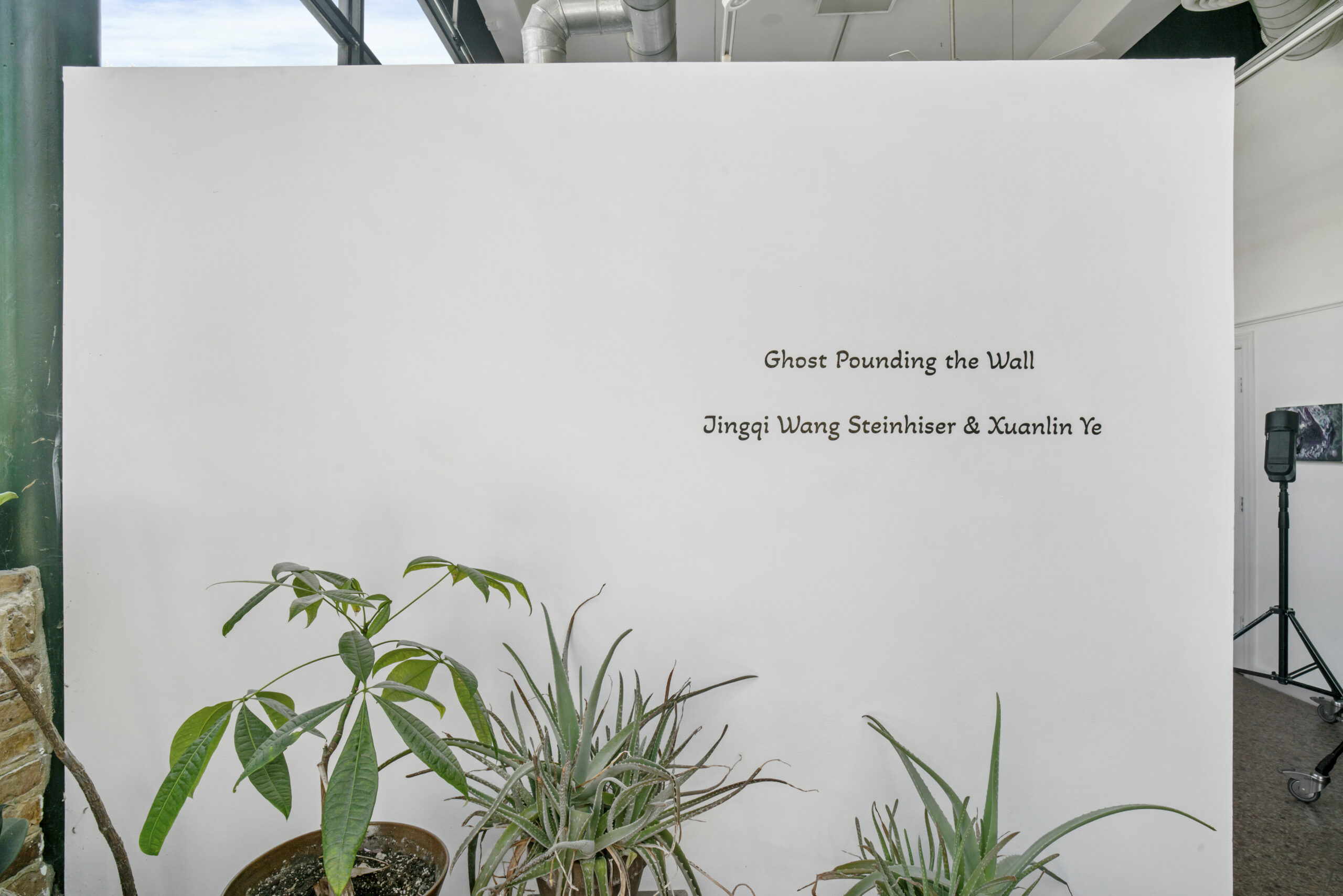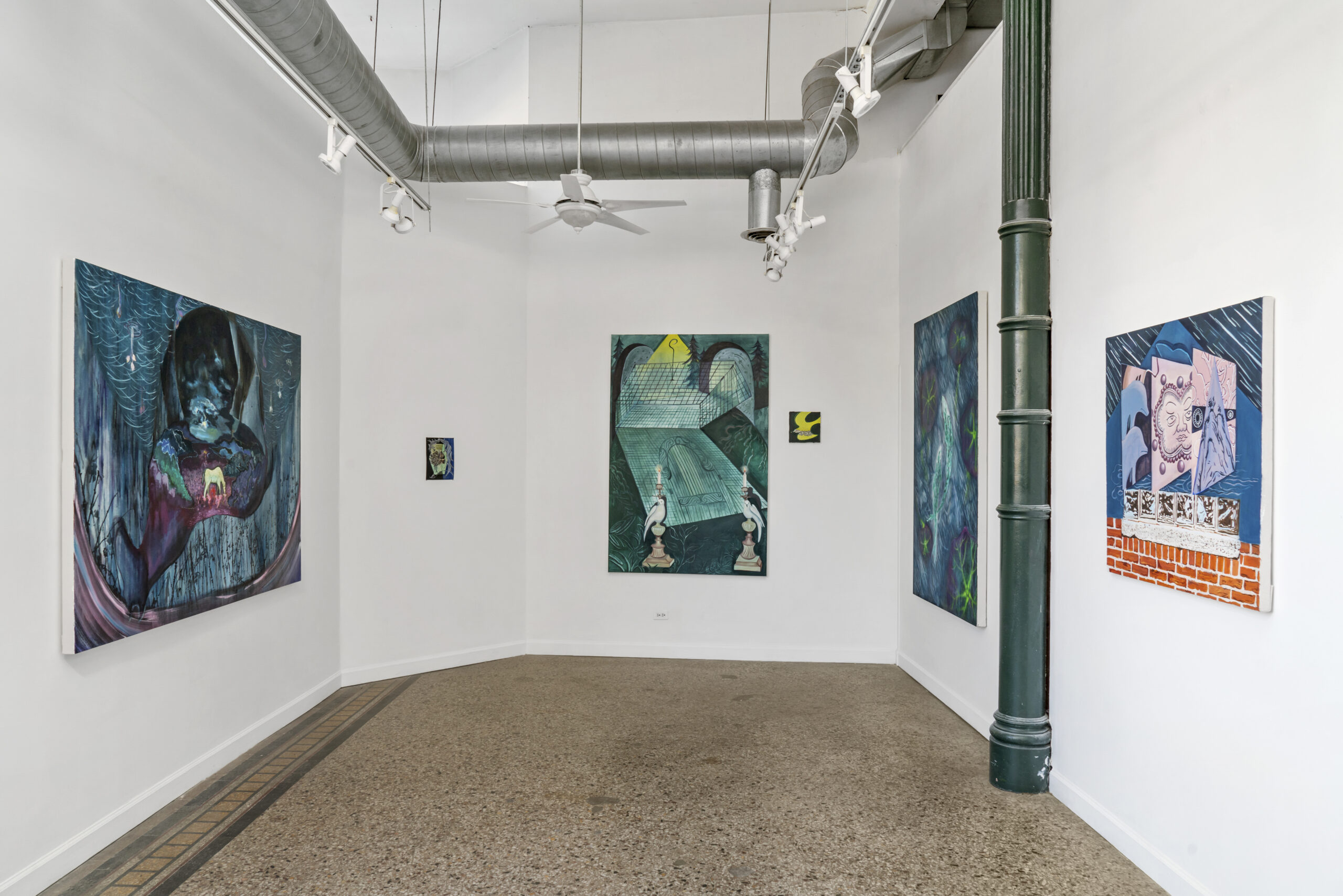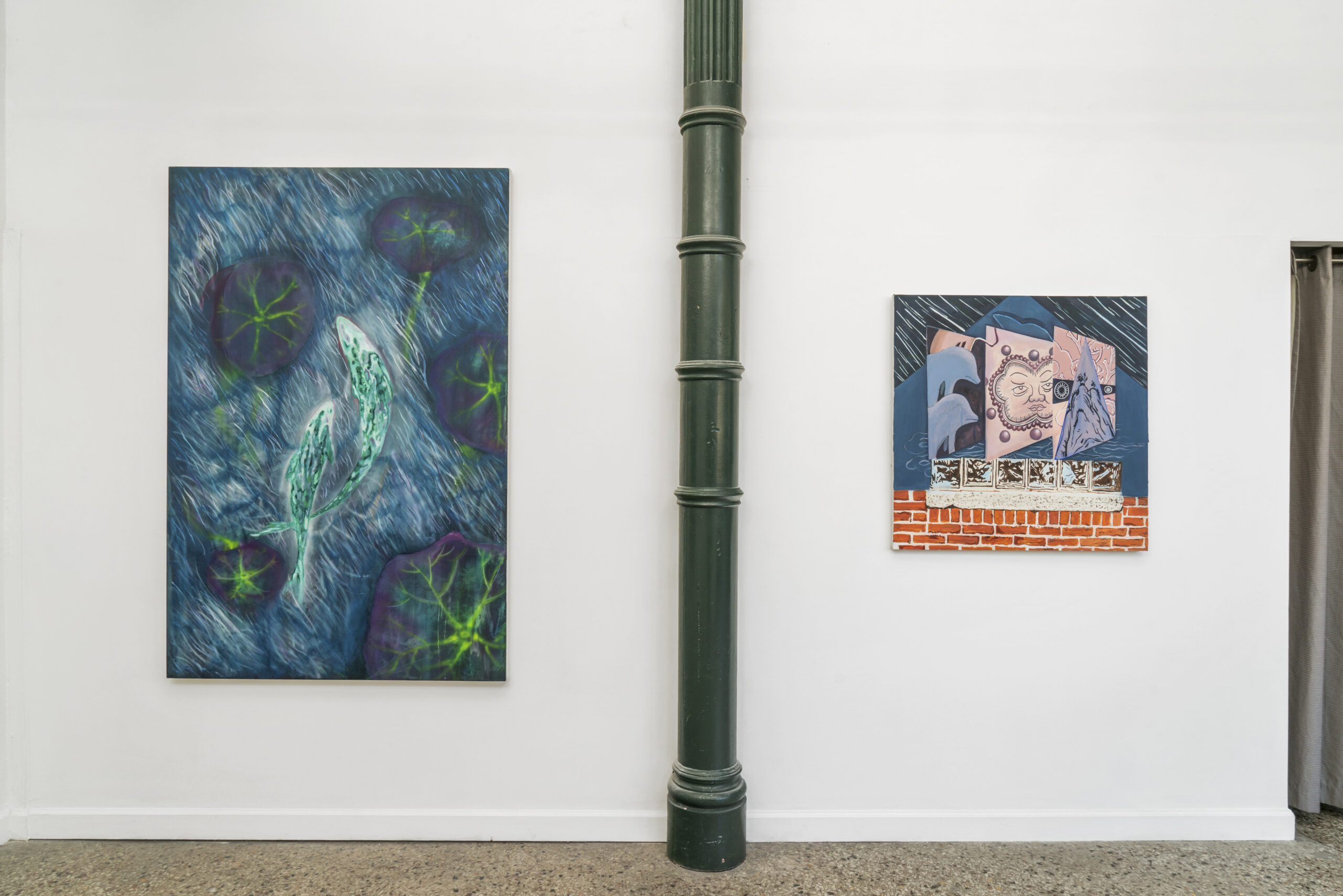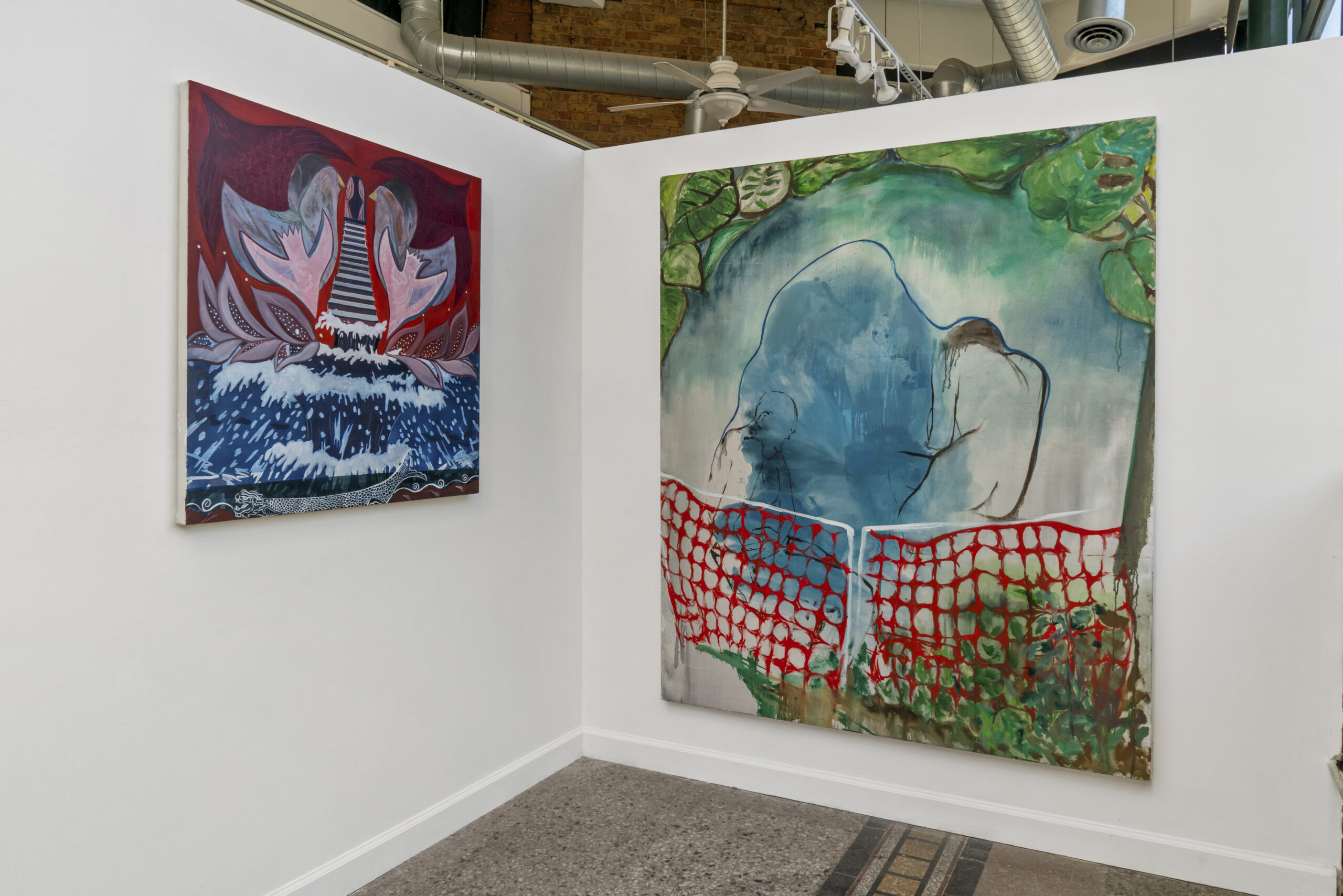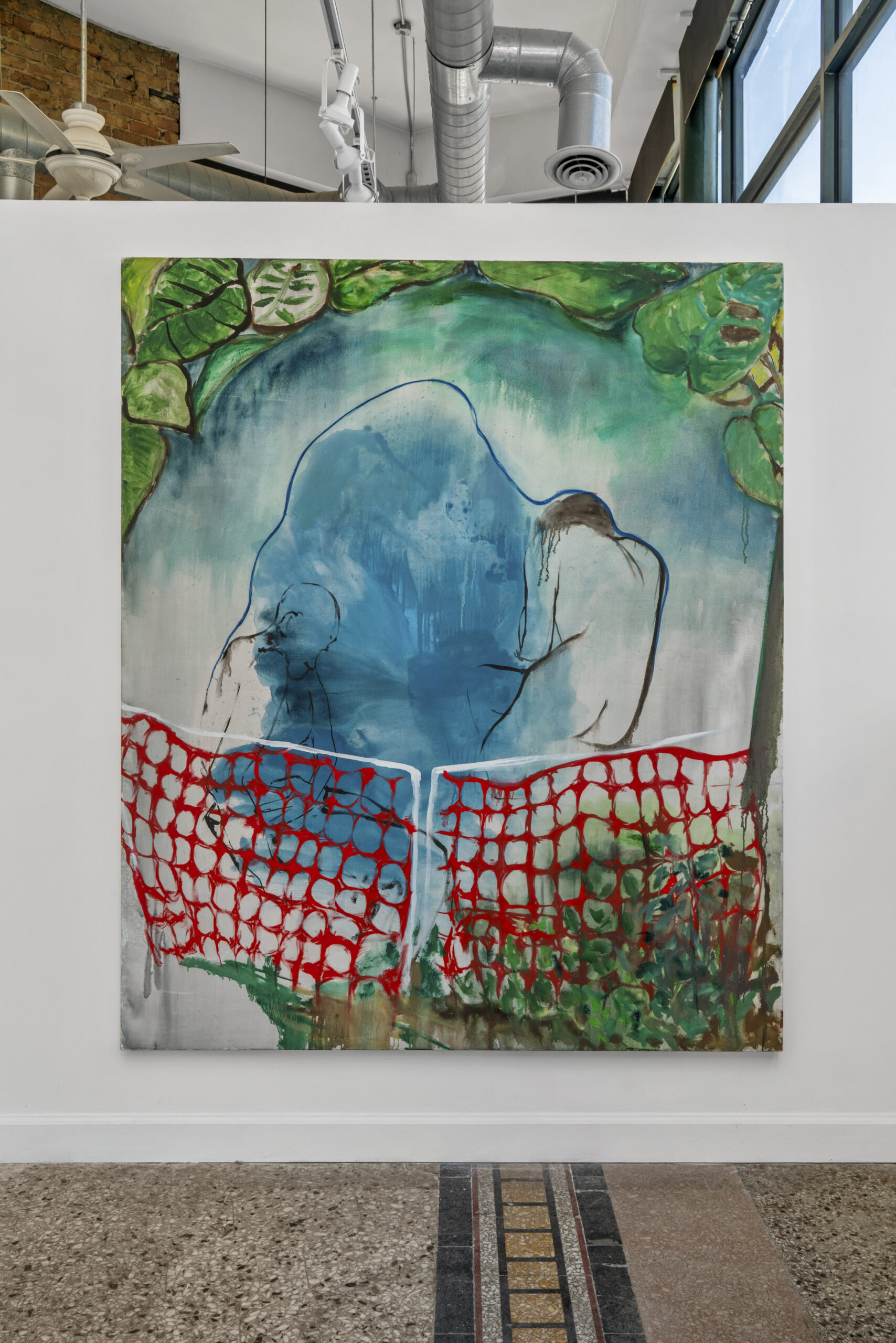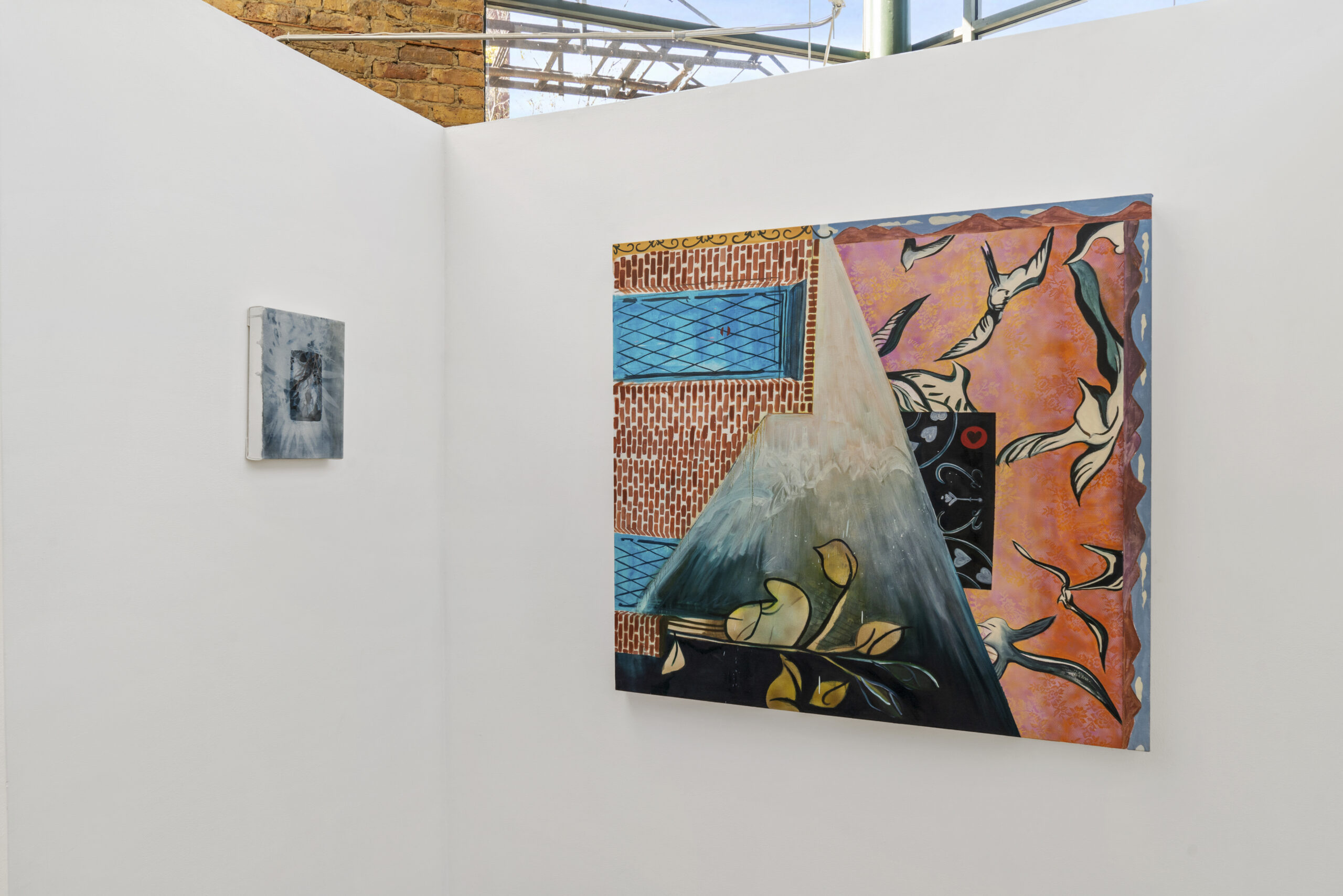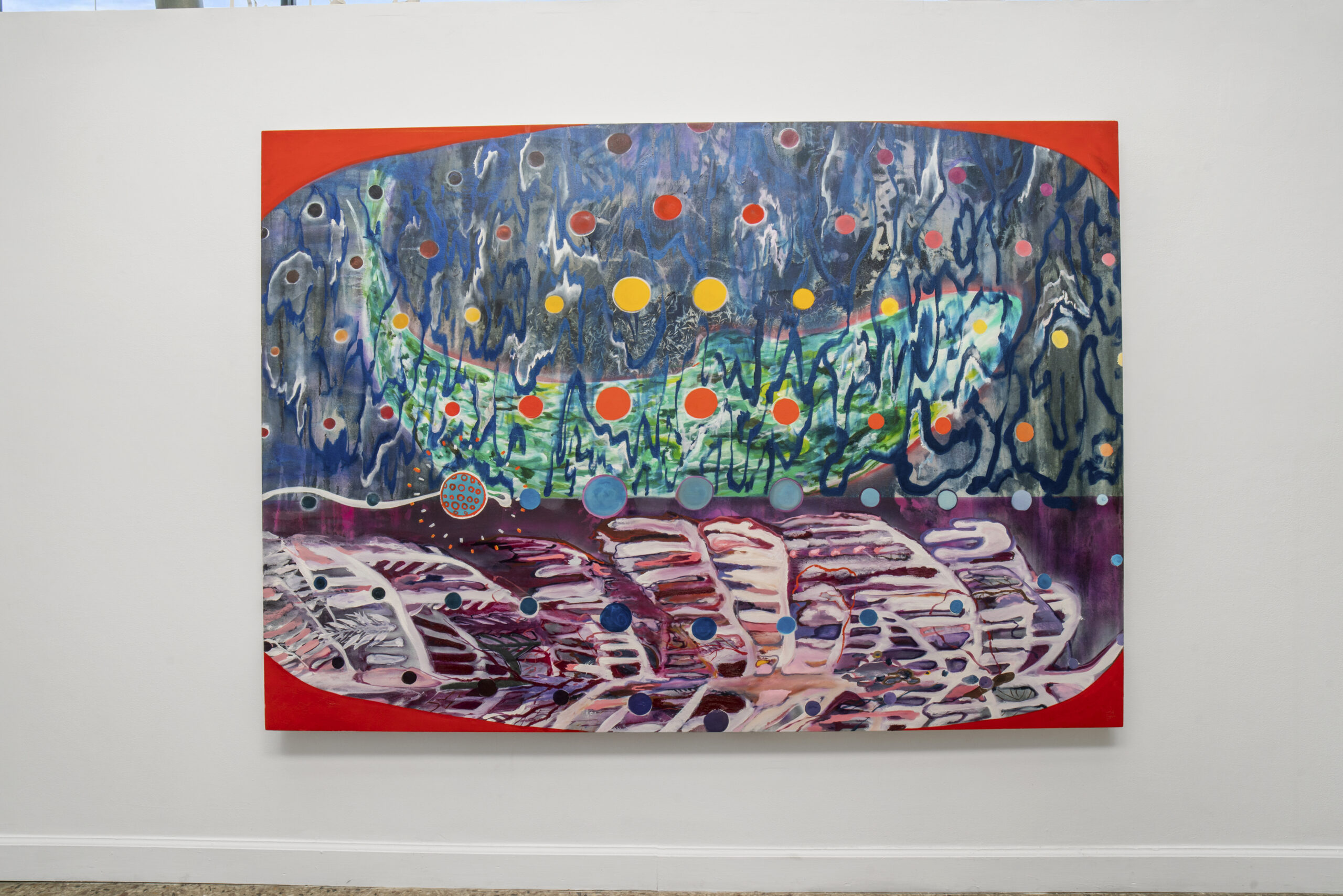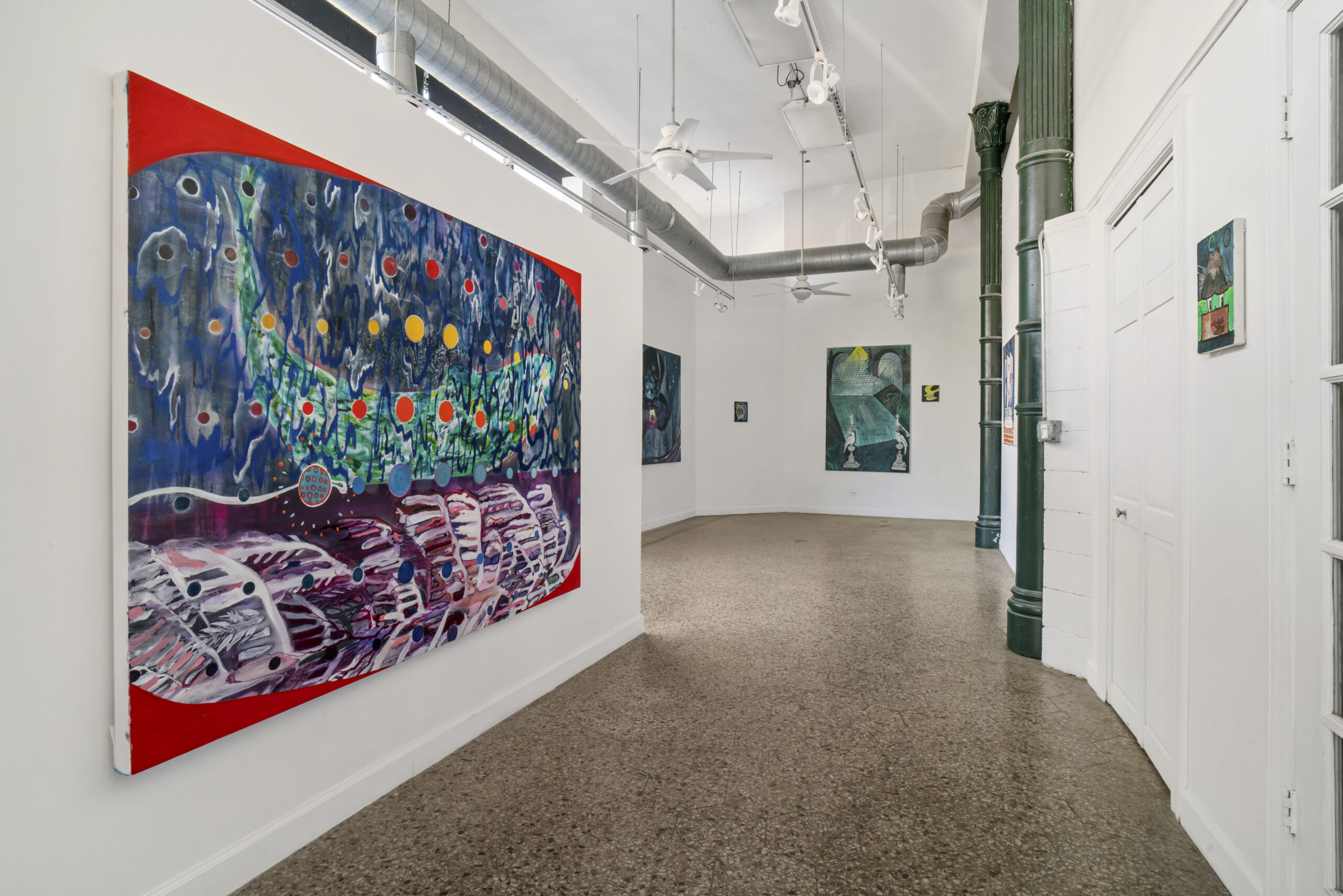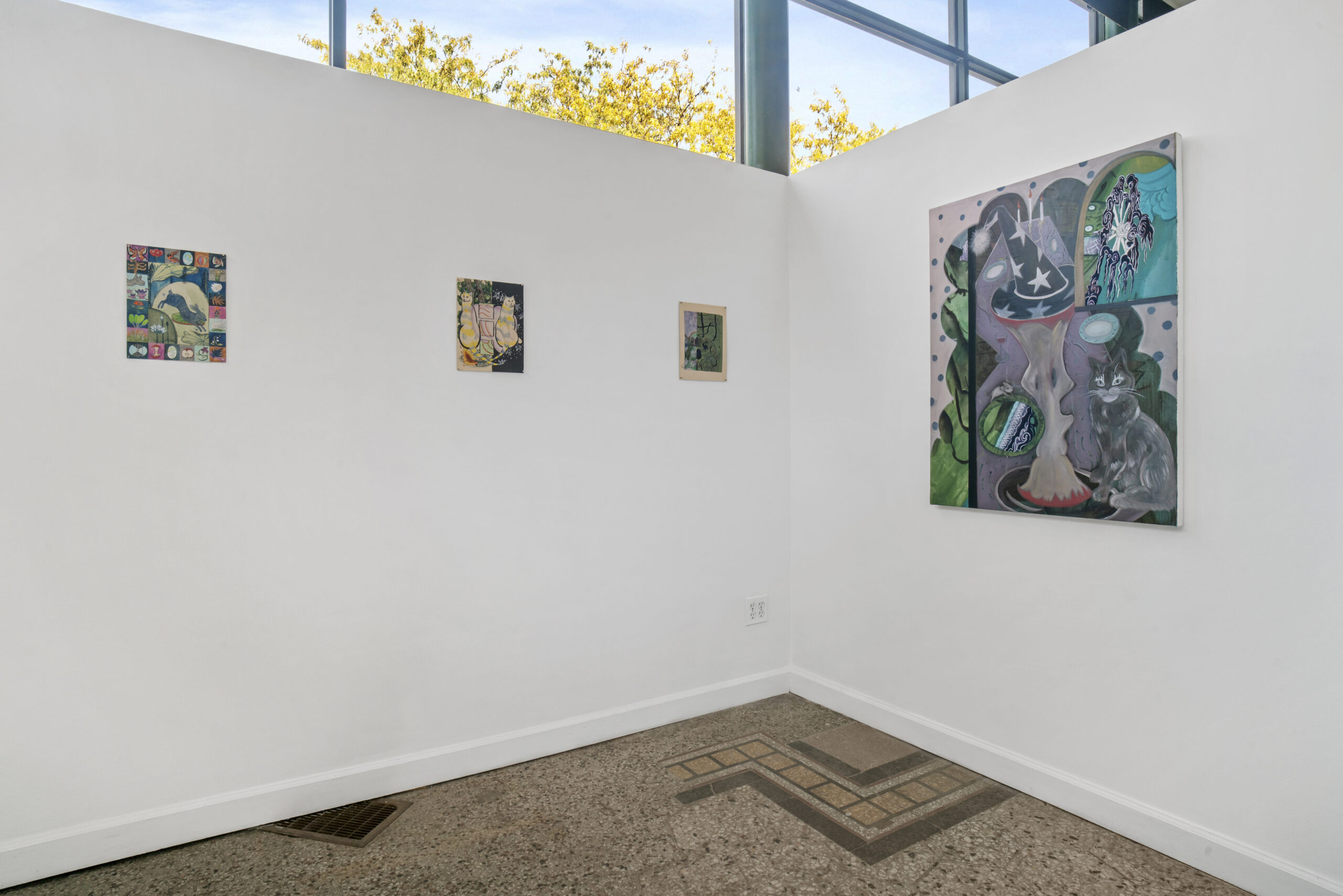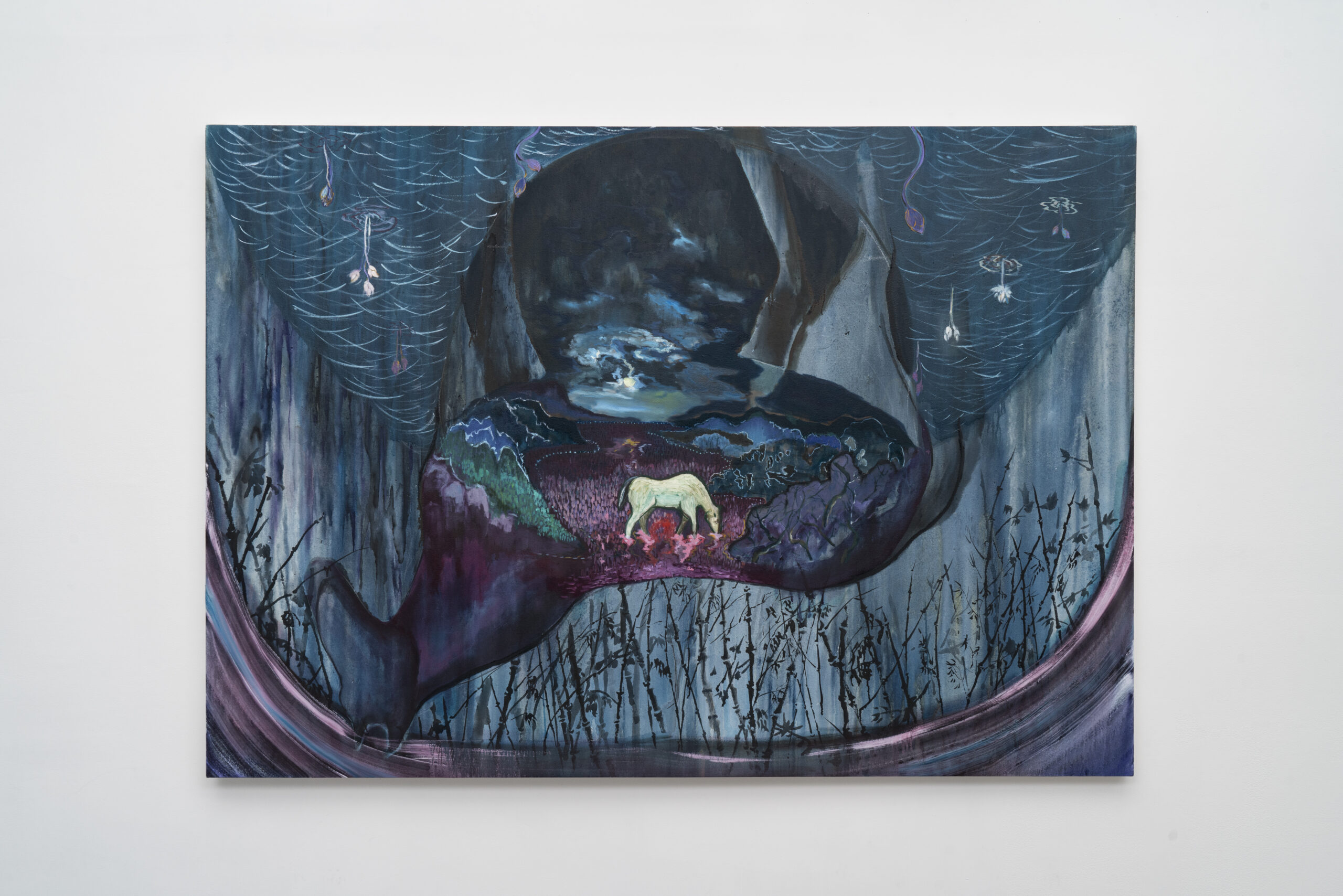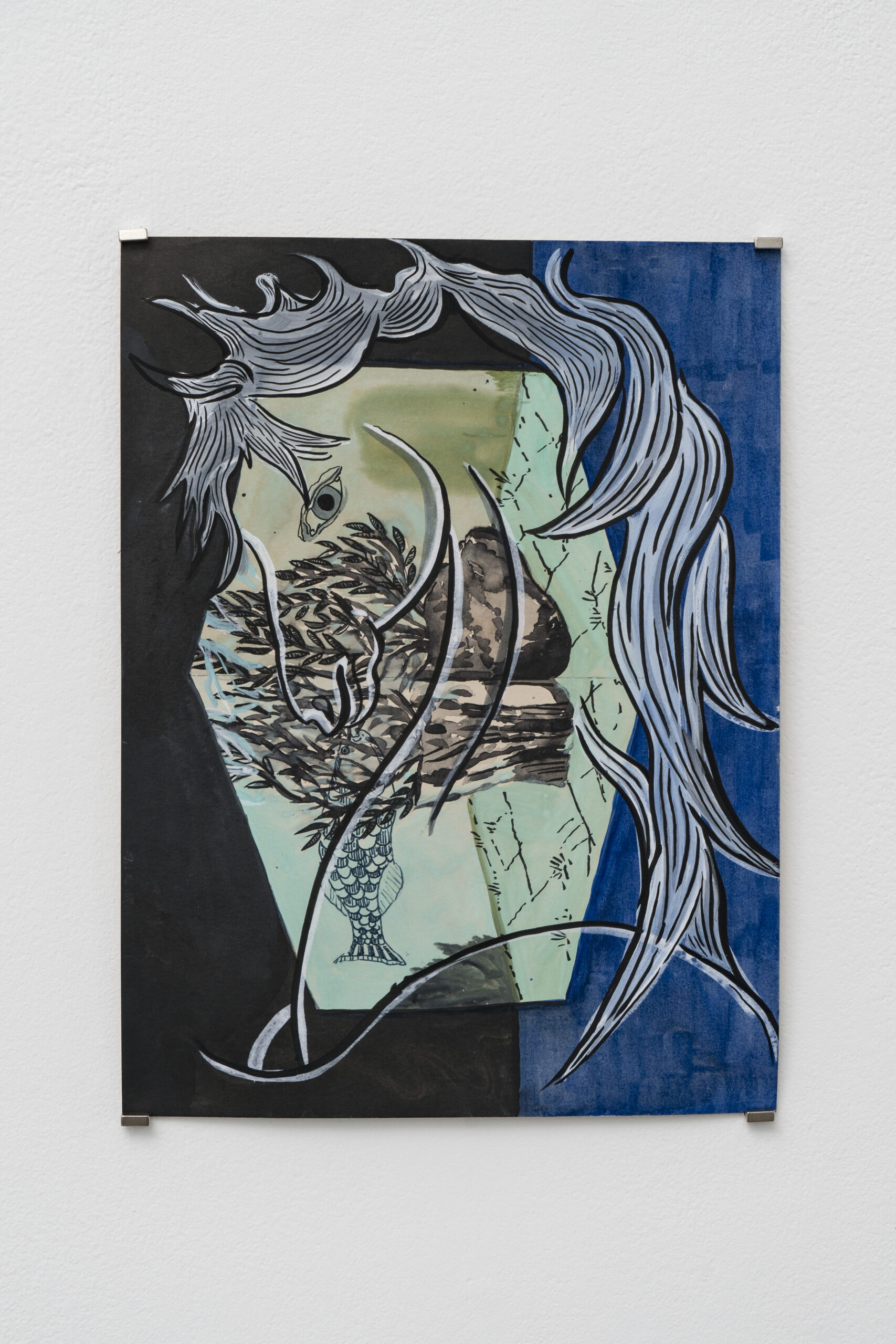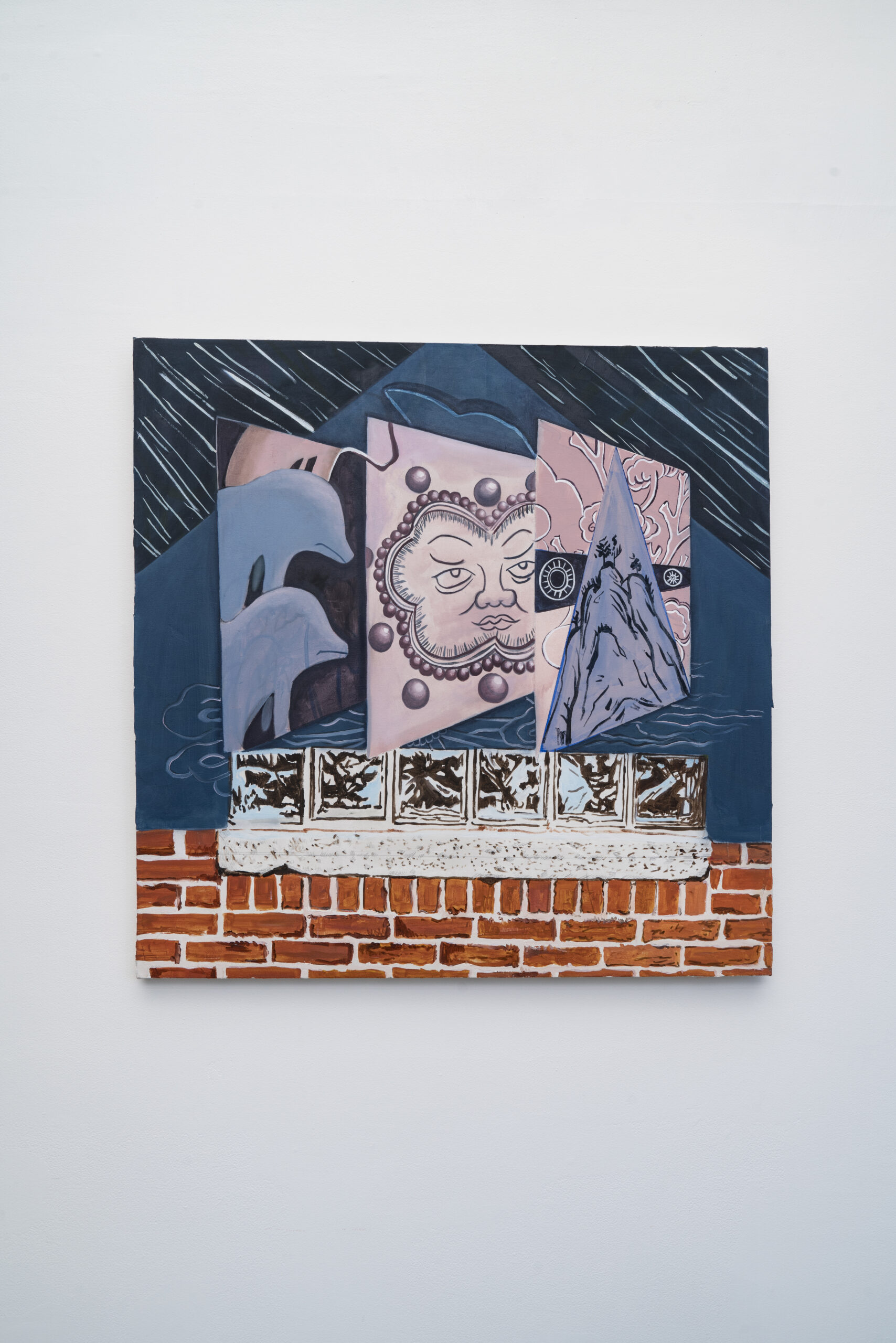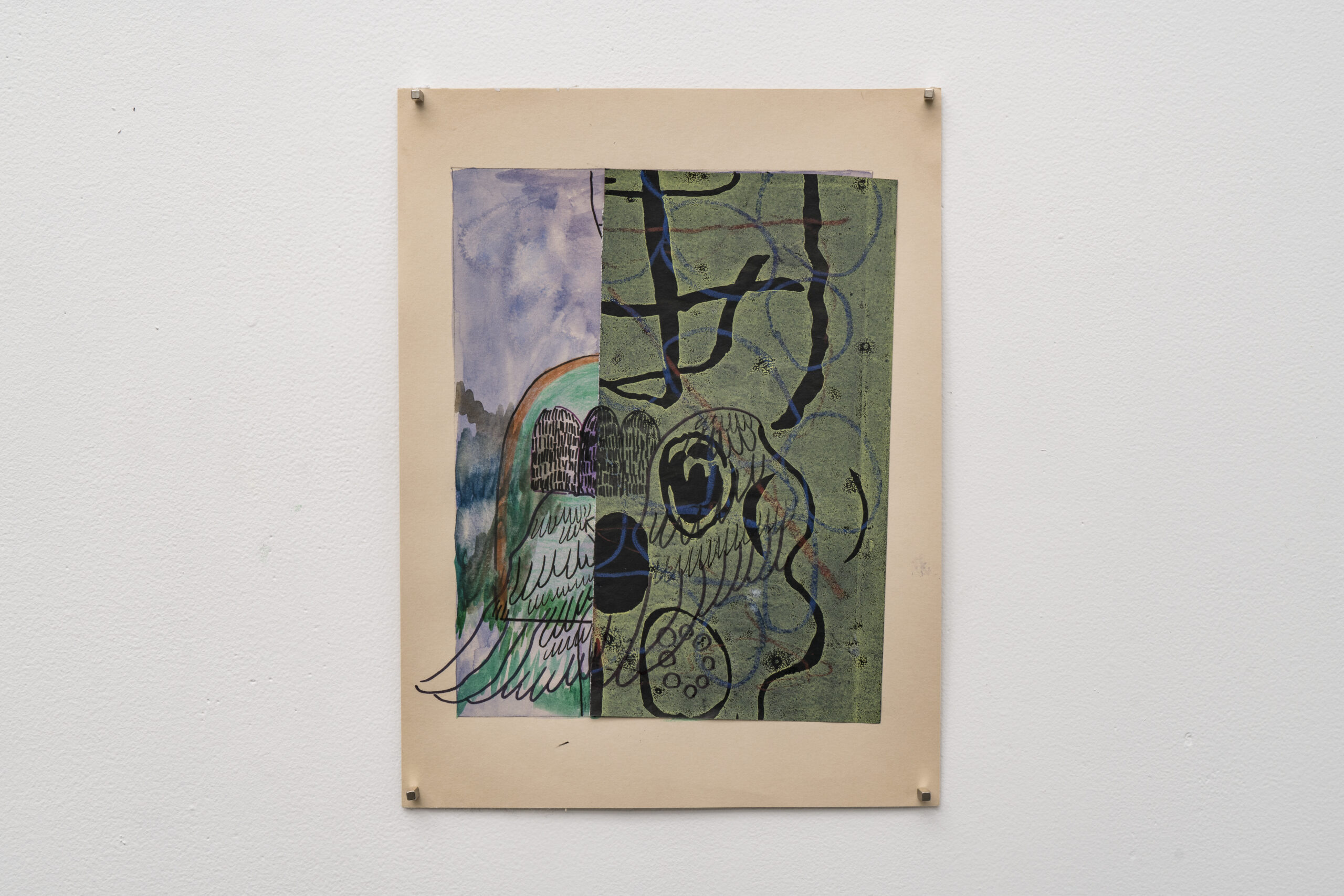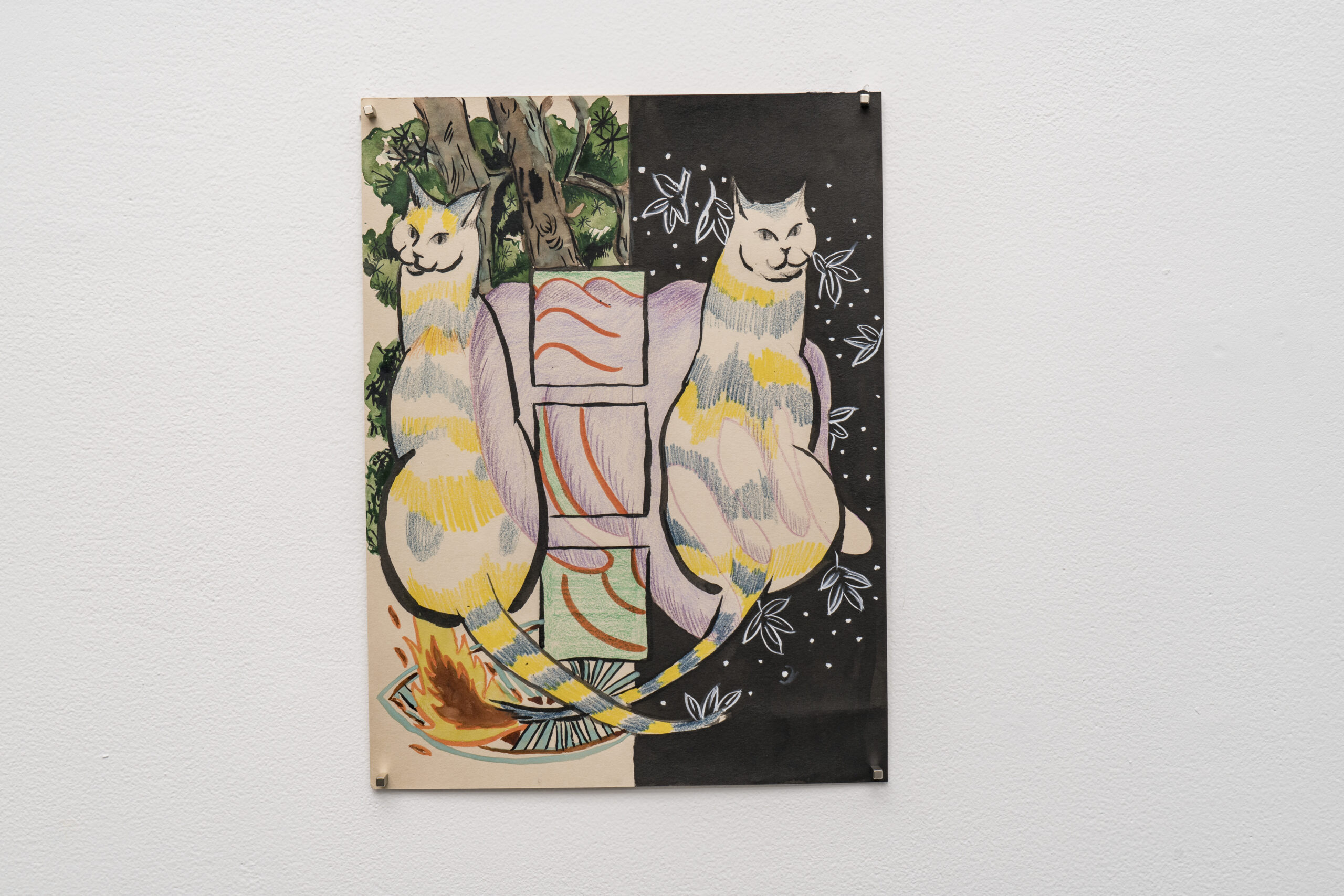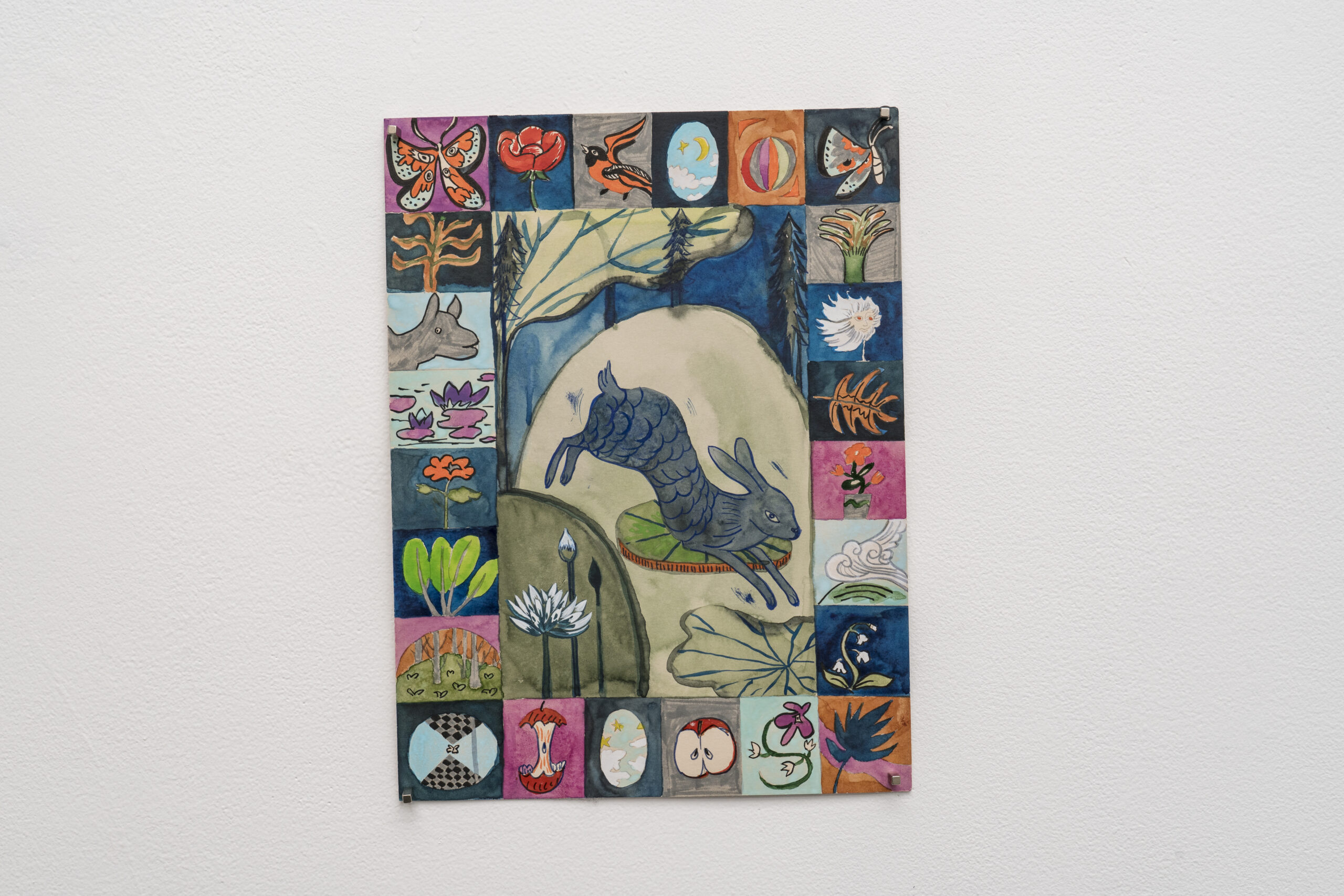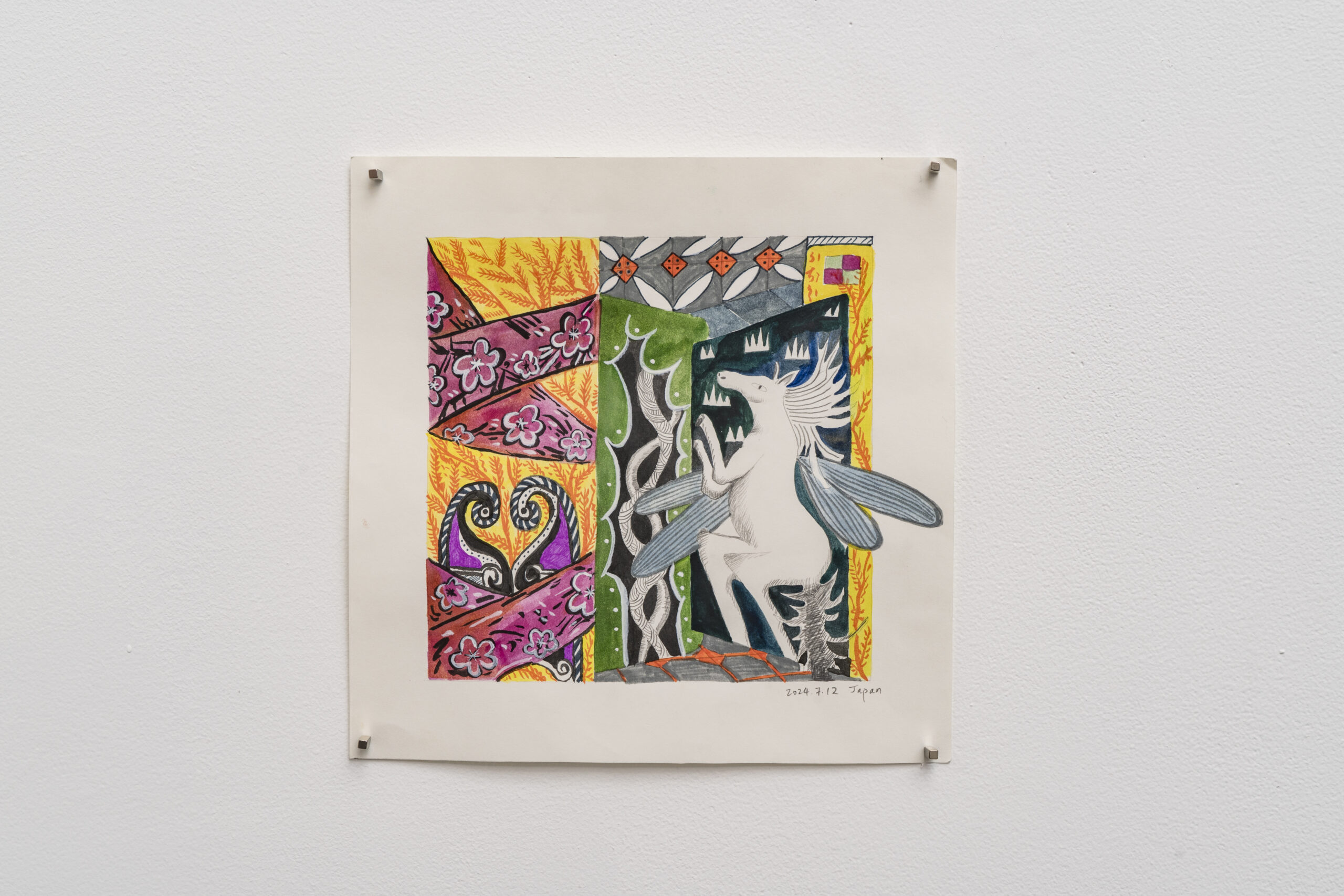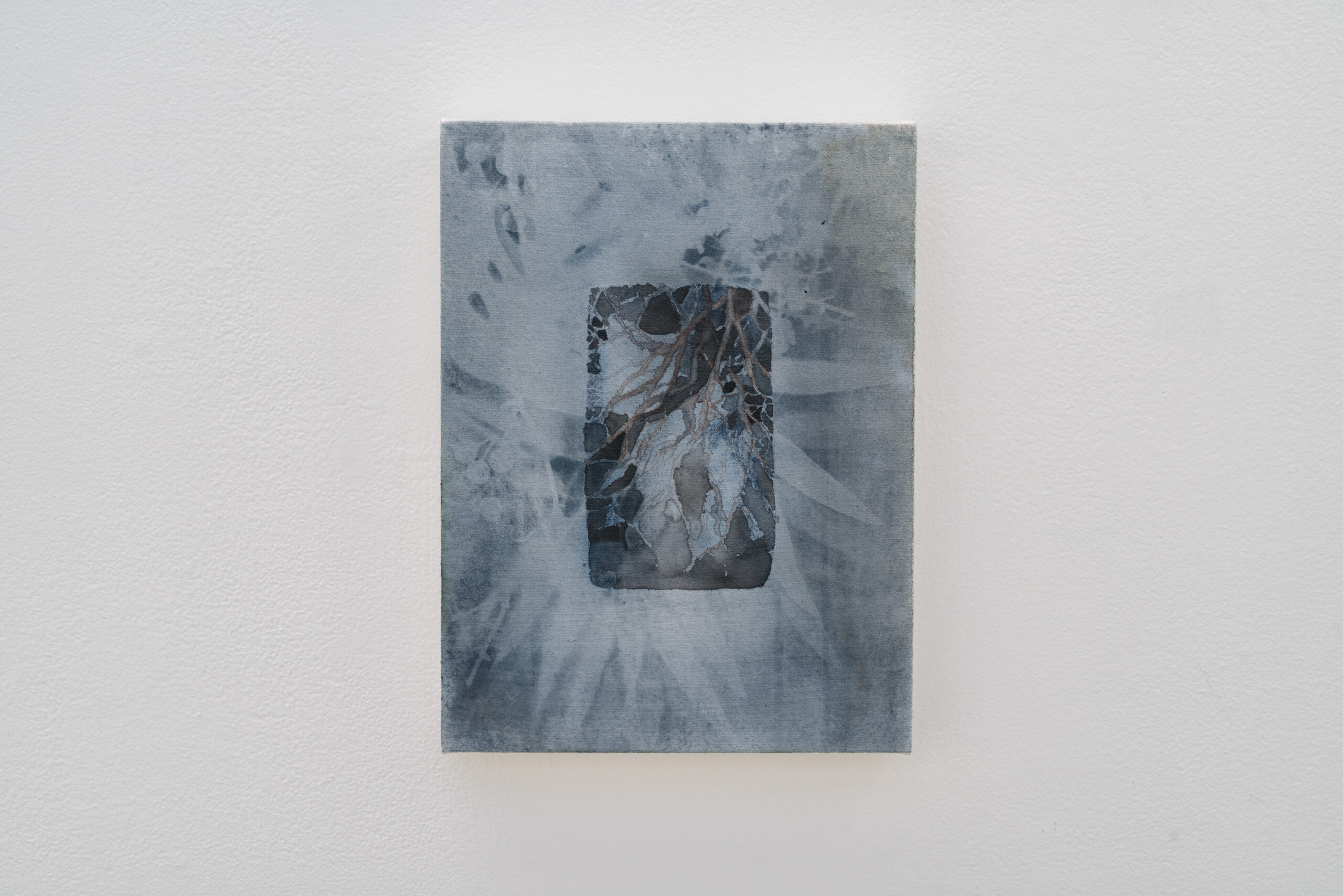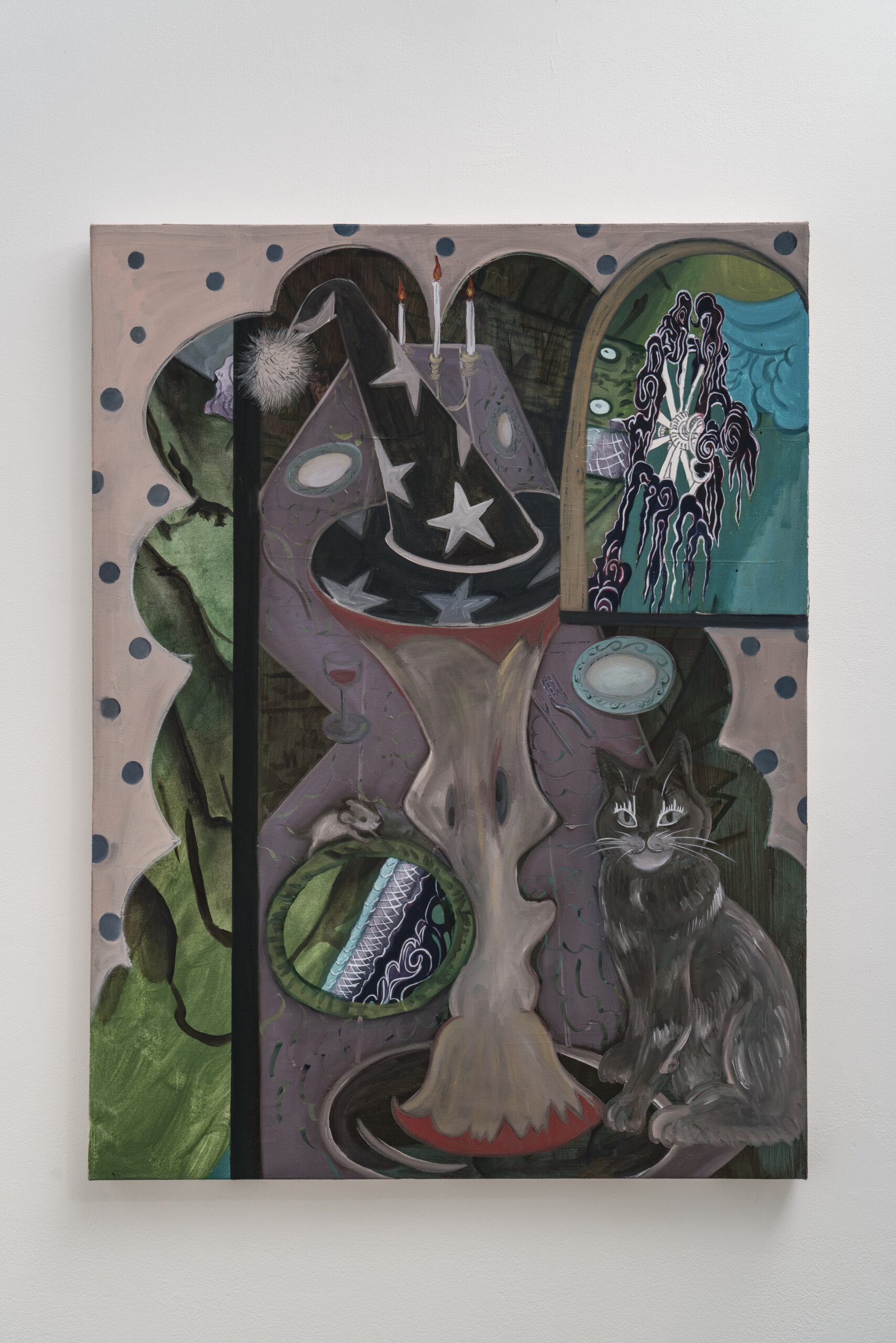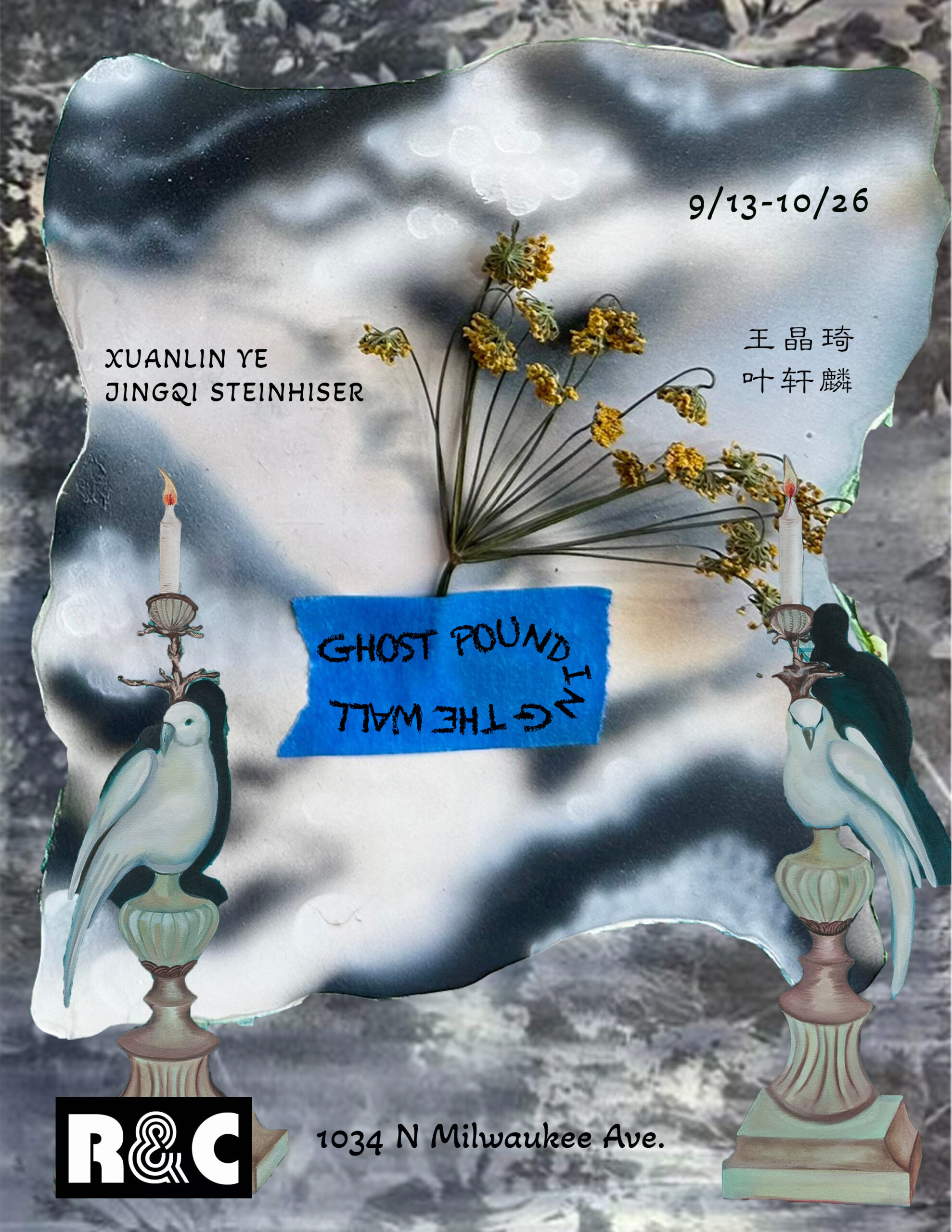
Ghost Pounding the Wall: Jingqi Wang Steinhiser & Xuanlin Ye
Opening Friday, September 13th 6–9pmGhost Pounding the Wall is a poignant ancient Chinese metaphor depicting the experience of navigating in darkness, where one believes they are moving forward but are, in fact, merely circling in place. Historically, it was believed that ghosts erected an invisible barrier around individuals, compelling them to retrace their steps and remain trapped in an endless loop.
Both artists utilize essentialized characters and symbols as they reconstruct traditional mythological stories, exploring the potentiality, affectivity and reification of visual syntax through the collision and fluidity of societal temporalities. They raise questions about the process of discovering and deconstructing cultural identities during their journeys across extensive geographical distances, aiming to explore the concept of global existence in a more human-centered and less imperialist way. Their aim is to reconstruct art history through painting.
Through the medium of painting, both artists navigate the complexities of identity, belonging, and cultural evolution. Jingqi investigates the animal body as a traditional and modern symbol, questioning how humans depict them in culture, translation and as commodities. These animal allegories provide context to her displacement and seek to answer what is “traditional”, examining the variations through visual culture cues. Through dying, layering, spraying, covering, and wiping out, she highlights the absurdity of alienation. Her work constructs imagined spaces that question the history of migration, self-recognition, and the power structure behind scenarios in commodification.
Xuanlin Ye, a Chicago-based artist,His work has been showcased worldwide, including exhibitions in New York City, Baltimore, Chicago, San Diego, Dallas, and Seoul (Korea). Ye’s art has been displayed in institutions such as the Chinese American Museum of Chicago, Ox-Bow School of Art, and Czong Institute for Contemporary Art (CICA) in Korea and Valencia College Orlando. He is currently teaching at Roosevelt University.
Xuanlin Ye’s paintings create a cacophony of colors, textures, and forms. Playfully reimagining the Chinese concepts of time and space, Ye employs photo transferring and cyanotype to imprint the corpus of tomb, mystic tales, cosmic symbols, and ephemeral natures that are simultaneously obscured by his own painterly ambiguity. The sedimented syntax and semantics tease out the ineffable thoughts of nothing, self-dissolved embrace of timeless memories. His paintings create his own cosmos through vibrant reminiscence of ocean, fire, earth, and air in a cycle of perpetual reconfiguring and re-emerging. They are the shattering, erupting and fiery chaos preceding the void of all. The ghostly shadow of bamboo and lotus recurs, delicately dancing amidst Ye’s swaying explosion of fluorescent colors. The bamboo and lotus become a glitching remembrance of the lingering warmth of home, a dissonant sentiment that is too misplaced to persist, too elusive to be definite.
Jingqi Wang Steinhiser is a multi-media painter born in China and raised in Mongolia. Jingqi received her MFA in painting at Rhode Island School of Design (RISD) and BFA in painting at School of the Art Institute of Chicago (SAIC).
Born in China, she lived a nomadic life in Russia, Mongolia and Korea before coming to the USA. Her world is an aesthetic amalgamation of dissonant cultures. Like topos in poetry, animals totems and distorted objects in her work act like modes of significations. Jingqi’s current work looks at animal patterning, gaming designs and power structure behind pop cultural symbols and scenarios in late capitalism.

